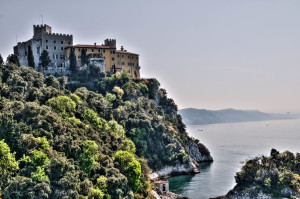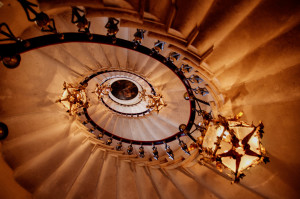
Standing on a rocky Karst spur dropping sheer to the sea, with a breathtaking view over the whole Gulf of Trieste, the Castle of Duino is a charming tourist destination: its beauty is enhanced by the warm and joyful atmosphere that the presence of the owners, the members of the family of the Princes of Thurn and Taxis, provides to this historical dwelling, making it lively, more than just a “cold museum”.
Rich in history combined with folk legends, indissolubly linked to the past of the surrounding territory, which witnessed glorious historical events and visits by illustrious figures, the Castle of Duino, just a few kilometres from Trieste, has a unique romantic charm.
The large park (which features colourful flowers of many species that create picturesque and charming colour effects in the classic Mediterranean vegetation) is enriched by romantic avenues, full of statues and archaeological finds, with terraces overlooking the sea.
It is possible to visit over 18 rooms of the castle, which are rich in precious evidence of the history of the family of the Princes of Thurn and Taxis. On request, it is possible to organize guided visits (in foreign languages as well). The castle is provided with a bar and a bookshop.
Don’t miss the Palladian staircase, an architectural masterpiece, and the 1810 pianoforte (played by Liszt). From the ramparts and from the fourteenth-century tower there are wonderful views.
It is also possible to visit the bunker, built in 1943 for the German Kriegsmarine to defend the base of Sistiana against a possible landing of the Allies. It was later used as an air-raid shelter and equipped with a gun, and at the end of the war the English army turned it into a fuel store (1945-1954). It has been open to the public since 2006. Thanks to patient and delicate renovation, it has been transformed into a charming mini-museum with period antiques that are displayed in a large room (400 square metres) at 18 metres under the ground.
Opening times can be found on the Castle website (http://castellodiduino.it/index2.php).
© fotografie di Alessandro Comuzzi
